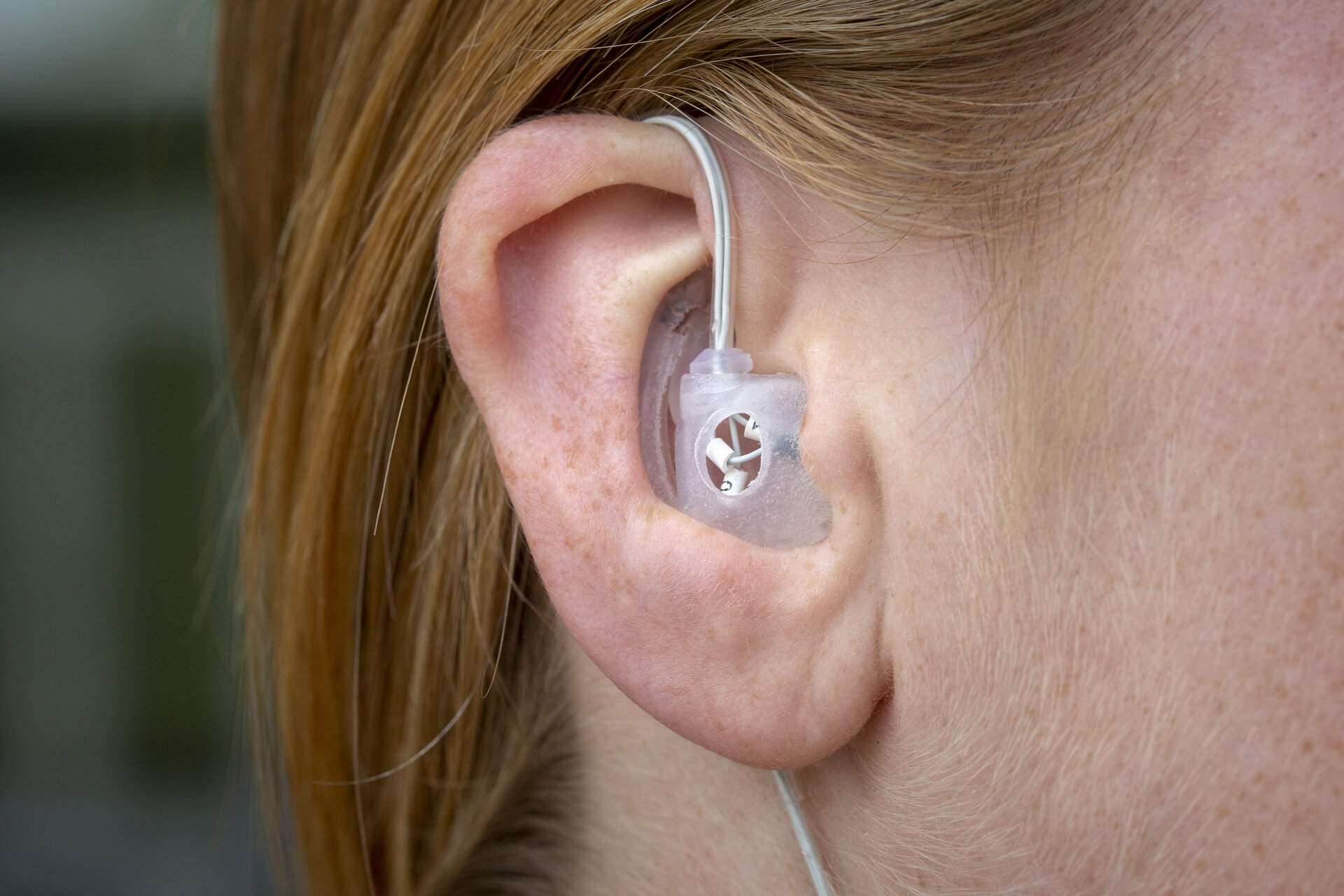Sleeping on the ISS isn't easy. This lamp for astronauts could help
ISS inhabitants sleep strapped to the wall and experience 16 sunrises a day.

We humans have enough trouble keeping our sleep schedules aligned with sunrise and sunset on Earth — so one can only imagine what it must be like trying to get a good night’s rest on the International Space Station (ISS). Not only does the orbiting laboratory make a lap around our planet once every 90 minutes, meaning astronauts onboard experience a whopping 16 sunrises and sunsets every single day, but its inhabitants are constantly weightless.
ISS astronauts can’t exactly slump down into their beds. They sleep floating, strapped to the wall.
So, thinking ahead to a future where spaceborne endeavors become increasingly common, scientists have created two sleep-aiding inventions. The first is a lamp that can be synchronized to an individual’s circadian rhythm, and the second is an in-ear device that can measure the quality of the wearer’s sleep.
"Circadian rhythm" refers to the types of physical, mental and behavioral changes that happen to an individual over a 24-hour time period — and as you might imagine, one of those changes is how sleepy or wakeful that individual may feel. This is actually why the phenomenon is often called our "internal clock."
Related: Sleeping in space: how astronauts get a good night's rest
But most importantly with regard to this study, our circadian rhythms are directly associated with light we’re exposed to (on top of other things, such as the temperature of the room we're in).
In a way, experts say, sunlight is a major cue that our bodies use to calibrate our internal clocks. That’s why daylight savings is known to impact our sleep schedules, and why a sunrise alarm clock is considered an effective way to help you organically wake up rested and ready to go. And in fact, the significance of light in guiding the circadian rhythm is why blind people sometimes have problems with their sleep, according to a report by the University of California, Los Angeles.
Breaking space news, the latest updates on rocket launches, skywatching events and more!
Thus, ISS astronauts experiencing more than a dozen sunrises and sunsets per day may need a bit of artificial light to aid their internal clock calibrations — precisely the kind of thing the lamp, developed by an organization called SAGA Space Architects, purports to offer.
Testing, testing
Right now, European Space Agency (ESA) astronaut Andreas Mogensen is living on the ISS and therefore subject to the extreme sunrise situation of the laboratory. Hopefully, however, SAGA’s invention will ease the difficulties on the sleep front.
According to an ESA release, Mogensen installed the lamp inside his crew cabin on the third day of his stay in space. The lamp adds to a list of other lighting developments on the ISS, such as adjustable LED lights installed in 2016 that had a similar goal of fostering a cozier, more comfortable environment for space explorers.
In the evening, ESA explains, the lamp's light will glow red to simulate a "calming sunset" prior to bedtime. In the morning, the light will turn blue, "evoking the colors of a morning sky."
What’s particularly interesting here is the fact that, in space, there is no such thing as a "sky" the way we think of it. ISS astronauts are shrouded in the darkness of our universe. The sky is below them, surrounding Earth.
Meanwhile, as Mogensen sleeps, the in-ear device (which looks kind of like in-ear headphones) will measure his brain waves to determine how his slumber is going.
This part of the invention was developed by researchers from Aarhus University in Denmark. It's a pretty major advance, given that the usual way of measuring brain waves in space involves a full-scale electroencephalogram helmet. For a sleep study, such a hefty item doesn’t quite make sense.
The lamp Mogensen is testing has already been utilized by SAGA’s two founders during a two-month expedition to Greenland, ESA points out. During that on-Earth trial, both users found that the lamp helped orient them in time — a concept that starts to break down once we escape the embrace of Earth.
Potentially, the results of this study may help scientists decode the intricacies of sleep patterns on our planet as well. Though it’s consistently shown that blue light (such as from smartphone screens) impacts sleep schedules — that's why browser add-ons to mitigate blue light on your screens exist — there could definitely be more evidence to support nuances of the claim.
For instance, some experts aren’t so sure blue light-blocking glasses are a cure for insomnia, but many wearers anecdotally suggest otherwise.

Monisha Ravisetti is Space.com's Astronomy Editor. She covers black holes, star explosions, gravitational waves, exoplanet discoveries and other enigmas hidden across the fabric of space and time. Previously, she was a science writer at CNET, and before that, reported for The Academic Times. Prior to becoming a writer, she was an immunology researcher at Weill Cornell Medical Center in New York. She graduated from New York University in 2018 with a B.A. in philosophy, physics and chemistry. She spends too much time playing online chess. Her favorite planet is Earth.

